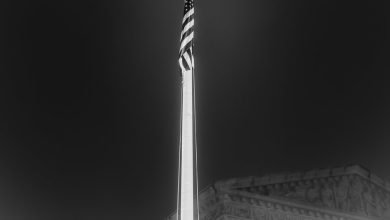N.Y. Assembly Democrats Largely Repel Challenges From the Left

In the Democratic primary for the New York State Assembly, a slate of left-leaning insurgents — running with the backing of the progressive Working Families Party and Democratic Socialists of America — had hoped to unseat a group of long-serving incumbents.
But with election results still coming in early Wednesday, it seemed that the challengers had mostly fallen short.
From New York City to Schenectady, numerous long-tenured lawmakers, like Assemblyman Jeffrey Dinowitz of the Bronx, appeared poised to claim their party’s nomination and move on to the general election in November.
Mr. Dinowitz, who was first elected in 1994, was leading his challenger, a former Senate aide, Jessica Altagracia Woolford, 62 percent to 38 percent, with 80 percent of the vote counted.
“It has been the greatest honor to serve the community that raised me, that raised my family,” Mr. Dinowitz said in a statement declaring victory. “I’ve spent my career fighting for our progressive values and delivering, and I can’t wait to continue delivering for the North Bronx in Albany.”
Other Assembly members who turned back insurgents included Inez E. Dickens of Harlem and Nikki Lucas of Brooklyn, who defeated Working Families-backed challengers, as did Deborah Glick in the West Village and Angelo Santabarbara in Schenectady.
The advantages of incumbency also benefited Democratic socialists in the Assembly, including Marcela Mitaynes, Emily Gallagher and Phara Souffrant Forrest.
The ferocity of many of the Democratic primary races, which have included significant negative campaigning on both sides, have contributed to an tense intraparty contest.
The state Democratic Party chairman, Jay Jacobs, contended that the primary challenges revealed the “arrogance” and impatience of progressive activists whose efforts he feared would endanger Democrats’ supermajorities in Albany.
The tension was elevated by the involvement of Representative Alexandria Ocasio-Cortez, who endorsed a slate of candidates across the state.
One of those candidates, Sarahana Shrestha, was leading the incumbent, Assemblyman Kevin Cahill, by just over 500 votes, with more than 95 percent of expected votes counted in the Hudson Valley district.
Ms. Shrestha, a climate activist and graphic designer, was also backed by the Democratic Socialists of America and has promoted a fiercely progressive platform centered on the climate crisis. Her campaign attempted to paint Mr. Cahill, who has held the seat since 1992, as entrenched and out of touch.
“Thank you to everyone who built this movement,” Ms. Shrestha posted to Twitter on Tuesday night. “We won because the Hudson Valley is ready to to lead this whole state forward in the fight for the beautiful future we deserve.”
Despite coming together to pass landmark climate and marijuana legislation over the past few years, Democrats have disagreed over how far to the left they should steer the state.
Last session saw Democratic lawmakers divided over whether or not toughen the state’s bail laws so that more people could be held before trial, as requested by Gov. Kathy Hochul. And while some progressive approaches to acute problems — like offering tenants protections from eviction during the pandemic — easily garnered consensus, other permanent structural changes, like requiring landlords to have a “good cause” to evict tenants, and empowering the state’s power authority to build renewable energy, have met opposition.
This year’s primary has been marred by chaos from the outset.
After years of bifurcated primaries that confused voters and cost millions to administer, New York finally moved to collapse its local and federal primaries into one day in June.
But hopes of simplicity were dashed when a judge ruled that Democrats had gerrymandered the state’s political maps. To accommodate the time it would take for the court-appointed special master to draw new nonpartisan maps, congressional and State Senate primaries were pushed back to Aug 23.
Although Assembly lines were also declared to be unconstitutional, the primary still took place in June, alongside those for governor and lieutenant governor, for timing reasons. To further complicate matters, a judge ruled that Assembly lines will also need to be redrawn — but not until after this year’s round of lawmakers are elected using the maps deemed unconstitutional.





